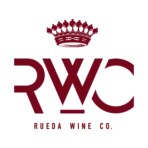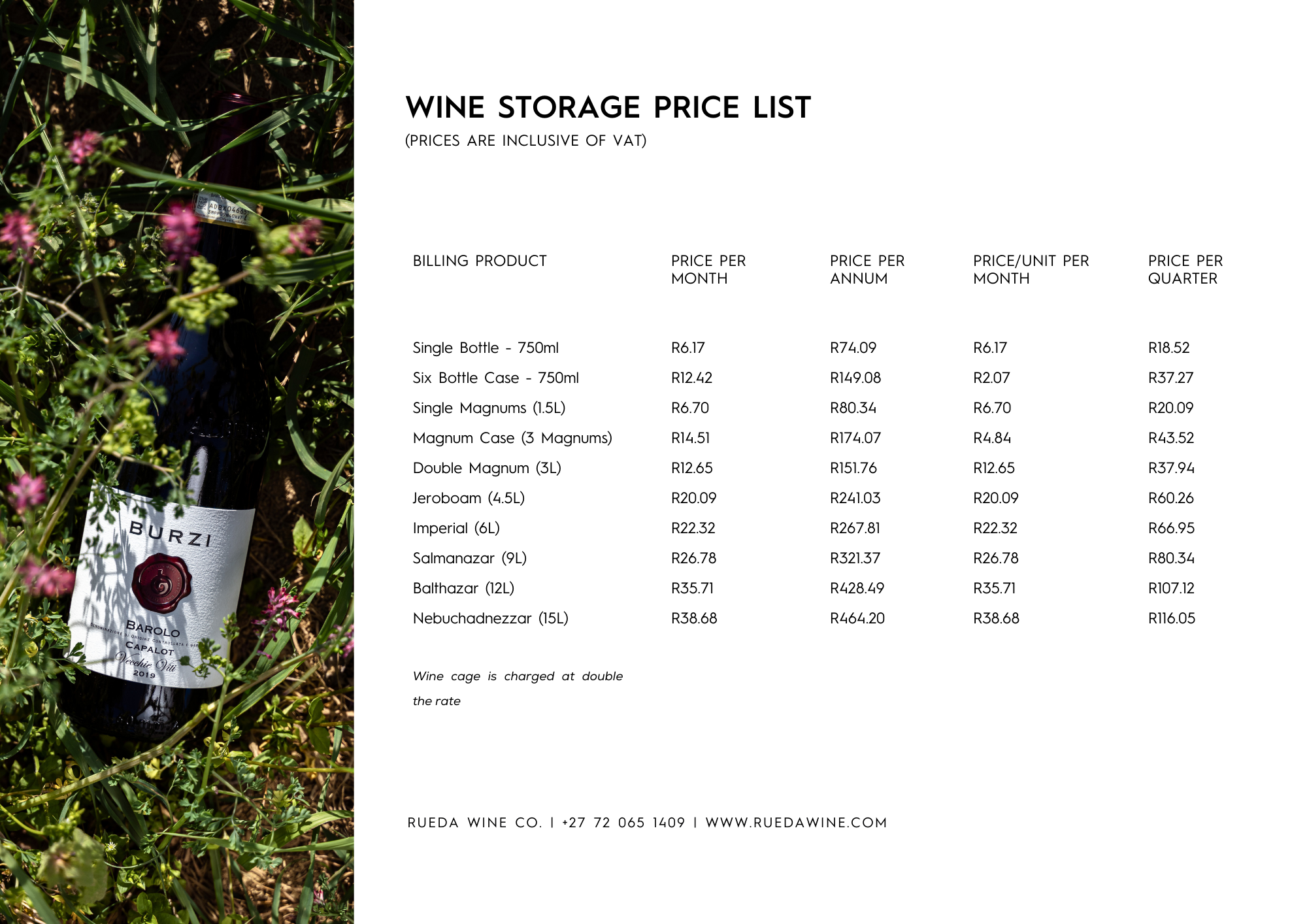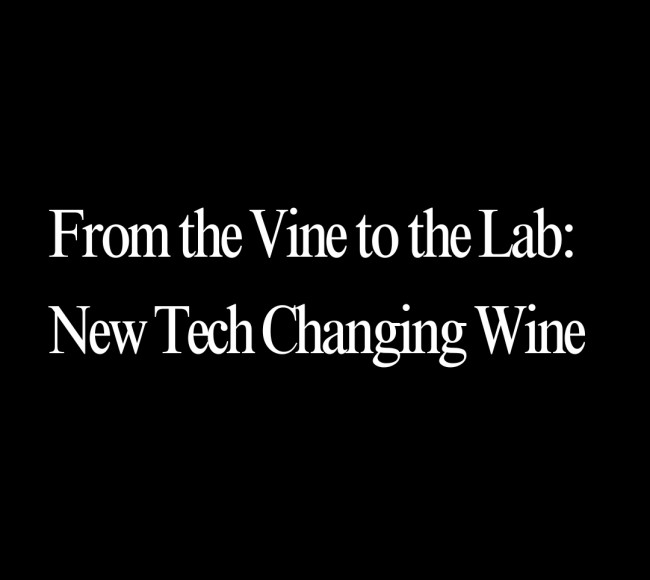
New wine technologies are arriving faster than ever before. Given wine enthusiasts’ sense of tradition and sometimes fanatical devotion to purity many may believe that the wine sector would be slower to adopt technological advancements than others. One could think that loyalty to entrenched methods is sacrosanct. And indeed, there are certain superlative vintages whose pedigree on such notions is predicated. For many modern winemakers, merchants, and consumers, technologically-led advancements in everything to do with wine put us closer to the ever-elusive, perfect bottle. Innovations on the farm, in the vinification process, consultative review apps and sites, rigorously tested and iterated products, and new techno-led methodologies inform everything from vine care to the cork and even technological assistance in optimising drinking conditions. All that is to say, with engineering, science, and technology changing the game, some believe we are closer than ever to achieving the best wine we’ve ever produced.
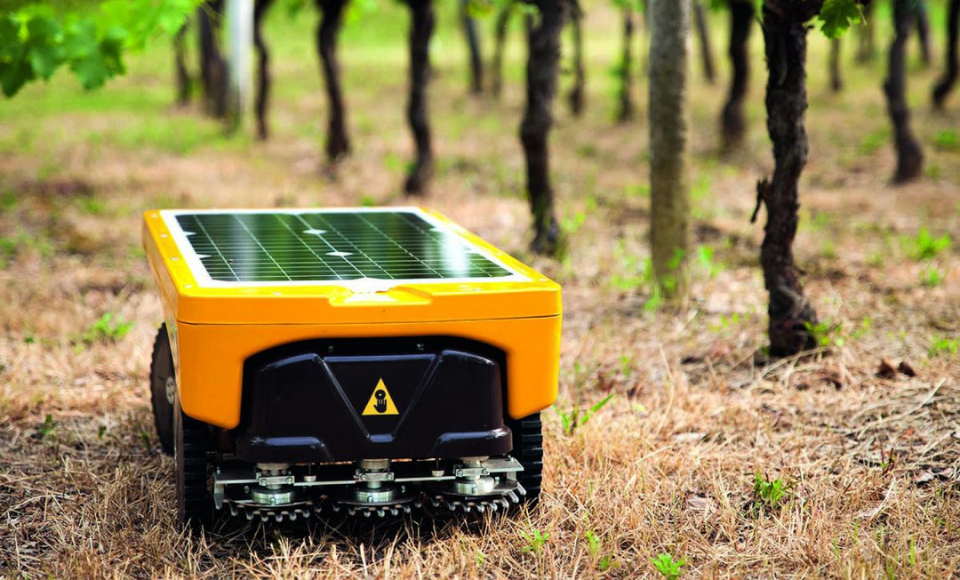
Precision Agriculture: Wine and Drones
Often, to sell a wine or demonstrate its quality, much fuss is made about its terroir. A shorthand for the qualities of the soil, grape, climate and such. But also an allusion to something more ineffable. The soul of a place, the instinct of the winemaker, or the character of a season. However, what does one do when the region they find themselves isn’t celebrated? Or perhaps, attempting to start a new farm hoping to produce the best grapes and, by extension, wine of which the location is capable?
Recent advancements in drone and ground robot technology promise many exciting developments. They offer much to those willing to deploy its manifold utilities. When planting new vineyards, drones map the area from the air with drone-captured topography. Due to strict laws around irrigation, we saw the first application of drones in France eight years ago addressing level issues. By accurately mapping the levels of their farms, farmers can preempt the water crisis. Using drone data, they can move the earth in the plots before planting allowing for better drainage and even watering. Because of drones’ unique perspective, these level differences, which aren’t always obvious from the ground, can be addressed well before planting.
Drones allow for heat mapping, which results in dynamic reordering of rows and sectors during picking. The satellite images of heat and other forms of drone analysis give accurate clues to grape maturity. This allows farmers to prioritise certain rows and portions of the plot. Which ensures that more grapes are at the pinnacle of ripeness when harvested.
Minimalist, a producer in the Western Cape, South Africa, farming in Elim and Elgin, utilises drone data. Sam Lambson of Minimalist uses the data to inform “picking decisions during harvest.” By employing the Aeroview platform of Aerobotics, a drone mapping and data company, Sam from Minimalist can:
“identify the differences in plant vigour throughout the block or vineyard. This allows us to divide a vineyard into various sections. These sections will each be picked separately, allowing us to create different styles of Syrah, all from just one vineyard.”
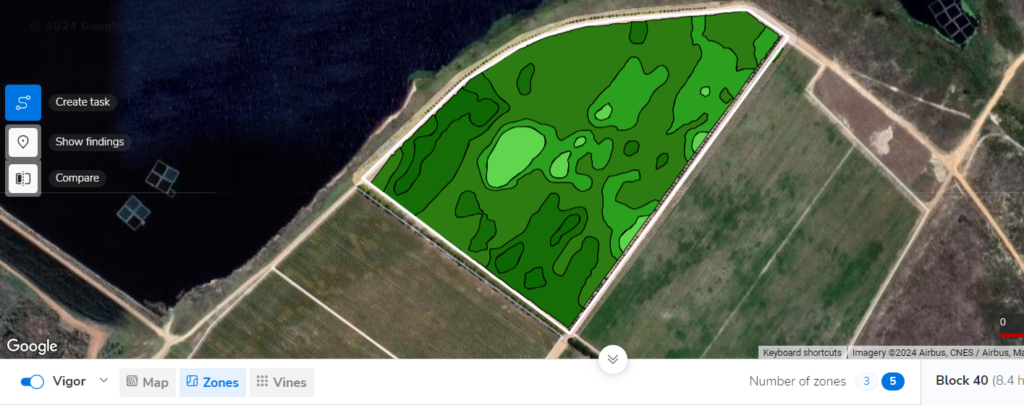
Image: Raw data after a drone has captured vineyard vigour
“Darker green parts are more vigorous, and lighter green parts are less vigorous. More vigorous vines tend to ripen earlier than less vigorous vines.”
One benefit to this mapping is that it allows Sam to control the alcohol content of his wines and select for attributes such as lightness, boldness of flavour, tannin content, acidity, and even the depth of fruit notes. Additionally, the data his drones collect give him clues to the overall health and conditions of the vineyard. And this new wine technology is only growing more useful.
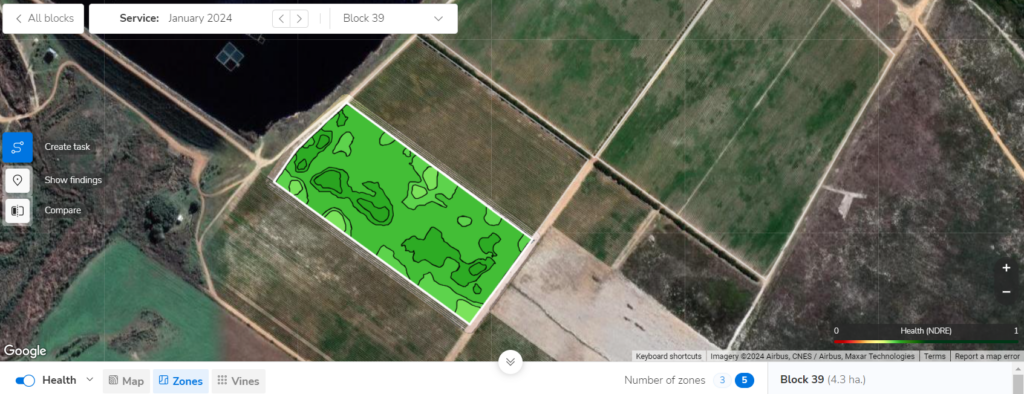
Image: Raw data after a drone has captured vineyard health
Such information, especially on larger plots, is invaluable to farmers. It allows for the identification of struggling plants and direct, targeted interventions. Even down to the per-plant level. Matt Church of the African Robotics Unit at UCT assures us that many of the new drones and ground robots are capable of “very precise identification of diseases and under-yielding crops.”
So How Much Can This New Wine Tech Really Do?
Besides these stellar monitoring benefits of drone technology, deploying drones and ground robots allows for several other types of monitoring, informing more dynamic responses to conditions. Accurate weather forecasting and sun mapping allow more efficient intercession during extreme weather conditions. Whether hand watering particularly parched plants, emergency harvesting ahead of or during frost, or better utilisation of shade cloth to protect against too much sun exposure. More accurate harvest data and heat monitoring of individual and macro farm-level yields allow for better overall planning.
But it’s not just data the drones provide.
Introducing Thorvald, Burro, Tom, Dick, Harry, the AGBot2, and Vitibot. These robots range from single purpose to a veritable Swiss army knife of functions. They are some of the newest, most cutting-edge wine technology.
Thorvald is a robot developed to protect berries and grapes. Its quarry: powdery mildew. “Thorvald provides that control, protecting your valuable vines through the application of UV-C light each and every night, so you and your team don’t have to.”
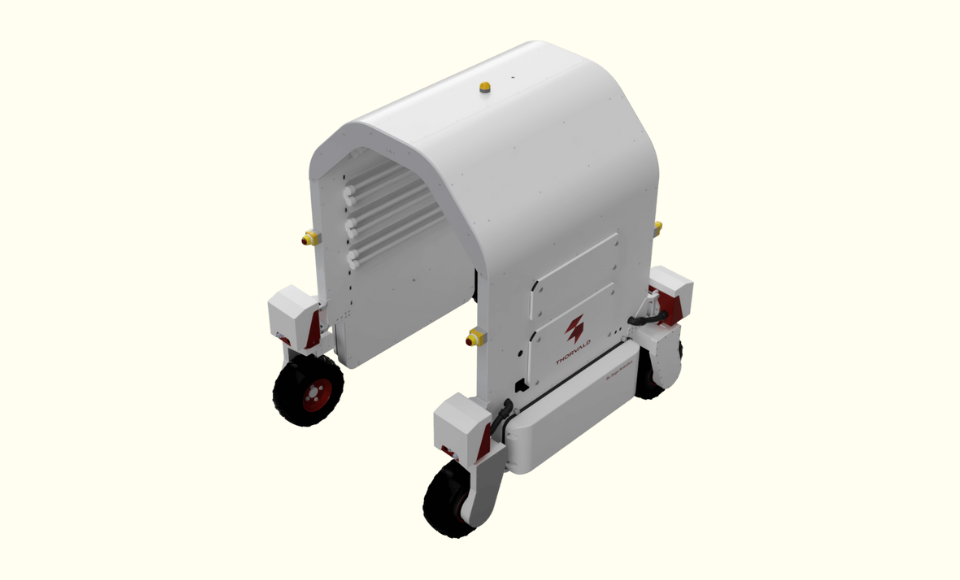
Image: Thorvald Robot
BURRO claims to entirely eliminate the need for a tractor and driver. The biggest bottleneck for most farmers, especially vineyards, is their steep labour requirements during harvest. With BURRO, all labour can harvest while the smart, autonomous platform comes directly to pickers to collect trays or baskets. If managed correctly, Burro’s smart systems will prioritise, ensuring that pickers deploy in the application that best suits them: removing grapes from the vine, while Burro does all the heavy lifting.
While there are examples of picking drones and robots in other sectors, vineyards pose unique challenges. Matt Church reminds us that,
“Vineyards tend to have a lot of rocks. It’s not normally nice tilled, graded soil. Rocks stop erosion and can increase water retention, which benefits the grape vines. But rocky terrain is difficult for robots. There are specialist vineyard robots, however, like ViTiBot, which can monitor and perform precision spraying.”
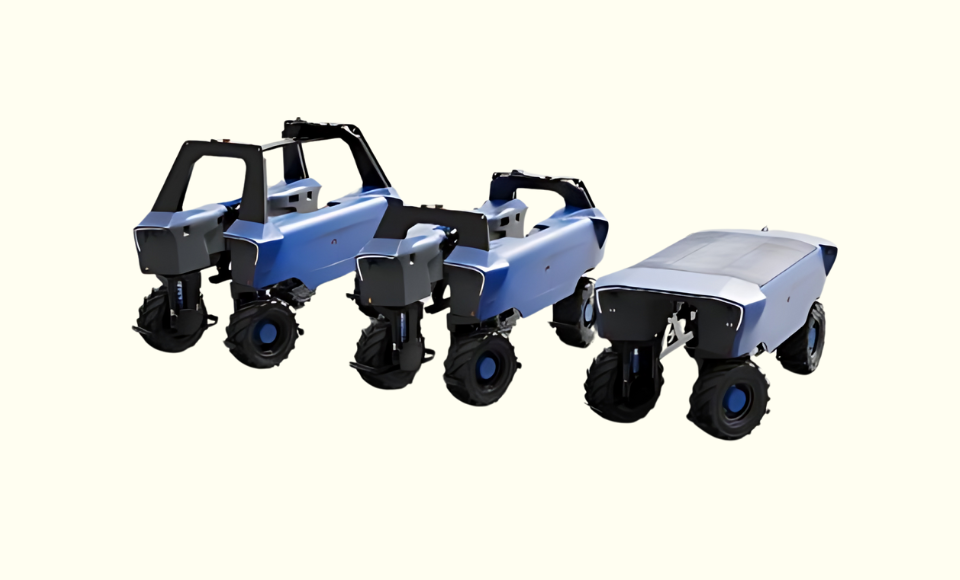
Image: VitiBot 2
The Vitibot is perhaps the only robot on this list designed specifically with vineyards in mind. Its creator claims, “The Vitibot uses sensors and cameras to predict grape harvest with only a 2-3% margin of error, saving a significant amount of time and money.”
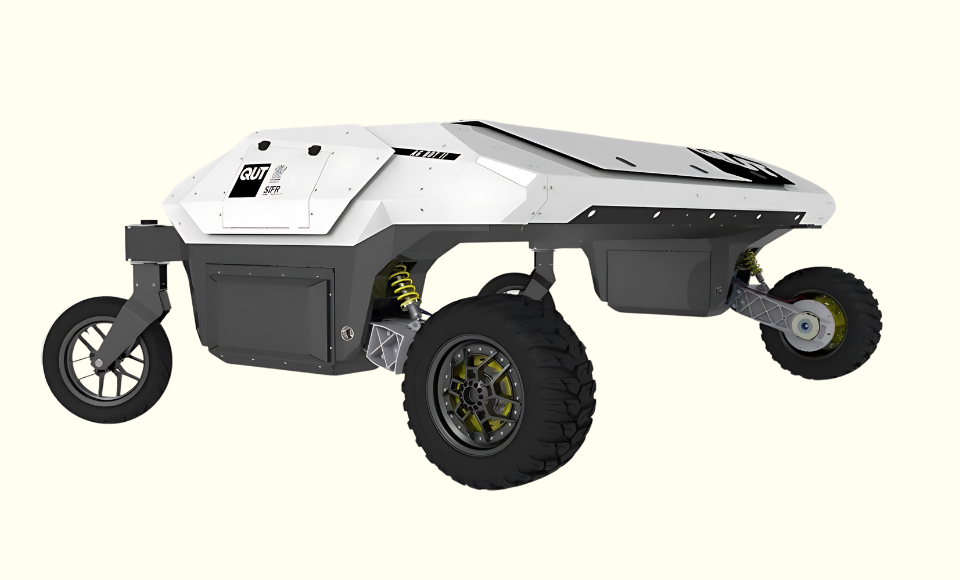
Image: AGBot2
Meet AGBot2 from QUT, which specifically kills weeds. It doesn’t sound like a big thing, but its primary benefit is boasting a tenfold reduction in the use of herbicides on some farms.
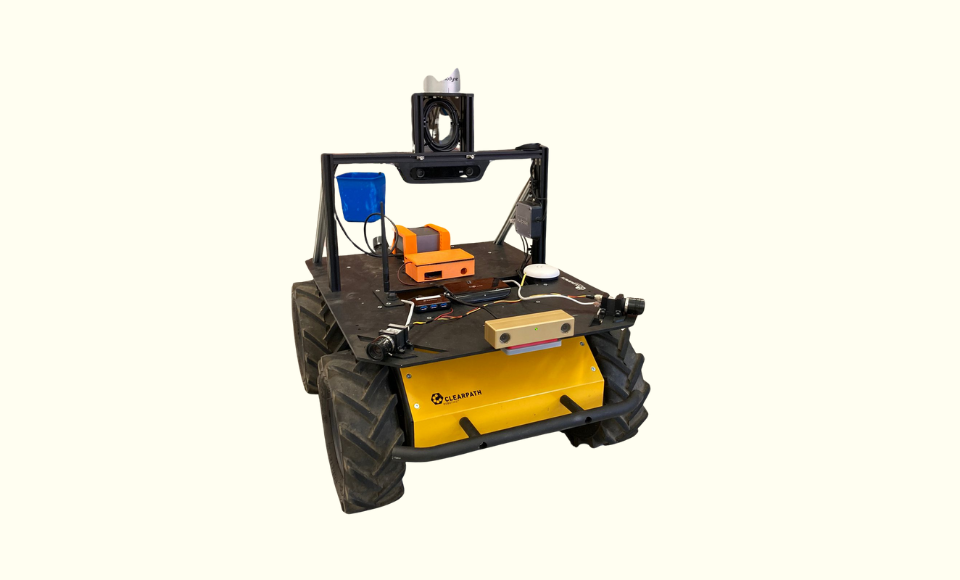
Image: TDK Bot
Tom, Dick, and Harry are capable of gathering data across multiple points. They identify disease, weed density, and nutrition requirements and even perform weed eradication. With all that information, farmers can identify singular plants needing intervention. You read that right. They can suggest interventions required for single plants or vines in the fields of massive farms. Utilising Tom, Dick, and Harry correctly, a farmer can send out the robots to kill individual weeds, mark a plant in need of nutrition, detect a sick plant in need of fungicide, or indicate an infested plant in need of pesticide. This level of intelligence is staggering for a machine. With almost no margin of error, TDK can identify specific pests, diseases, and fungi and suggest interventions or, in some cases, apply the fix themselves.
Matt Church states, “Targeted spraying and nutrition is a game changer. Precision spraying saves on pesticides. Not only cost but there’s less runoff. And less water table contamination.”
While some of these functions are incredible both for the farmer and the eventual consumer, drones, robots, and AI-led farm interventions, this new wine tech is not without downsides and risks.
Pricey Agriculture
When we asked Matt what the biggest pitfall of drone and robotic technology is in agriculture, he only mentioned price third. His biggest concern with the proper application of the technology is data.
“Robots need a lot of data.”
He explained some of the complex problems inventors and creators have had to solve, including but not limited to localisation and mapping. Put simply how the robot or drone knows where they are. “GPS is far too simple,” many required LIDAR, IMU, wheel odometry, and plenty of other inputs to solve localisation and mapping. There are other challenges, too.
“Too much sun, and sun positioning, could affect your camera and ruin your data. Losing a minute of footage affects that traversal. Moisture affects signals. So, you need to use several data streams and many traversals through the same area.”
After these challenges are overcome, there’s the cost to consider. VitiBot, as just one example, starts at 135,000 dollars and goes up to nearly $203k with all the bells and whistles. After this, there are maintenance costs. In vineyards specifically, Matt reminds us there is a lot of dust.
“Dust is hectic on machinery. It gets into bearings, onto shafts, and into computers. It limits visibility and affects certain instruments.”
So, beyond the initial investment, one must consider the regular maintenance and servicing of drones and robots. And while robots provide round-the-clock monitoring, targeted interventions, and a host of positives, they do not mitigate the steep labour requirements of harvest. Seasonal workers are still required, and it’s unlikely we will soon see a situation where robots form the majority of a farm’s workforce.
Beyond the Farm, New Wine Tech in the Cellar
While having extra hands and eyes on the farm makes sense, the current application of robots in the cellar and during the rest of the vinification is quite limited. That doesn’t mean there isn’t a huge proliferation of new methods and processes. In the cellar, we see plenty of new wine technology. ETS labs are responsible for an exciting new development, specifically regarding yeast chains. By using DNA reporting to guide the fermentation process, among other tools, they aim to enhance winemaking through a suite of diagnostics. Almost anything to do with the microbiology of wine can be tested, directing the winemaker where to refine the process. The fermentation, sedimentation, and maturation methods of subsequent vintages can be tweaked or modified to capture the results a winemaker has envisaged.
Other machines like the DTMA Maceration Accelerator “reduce[s] maceration times, obtaining an early pressing with an optimised extraction of phenolic materials.” Increasing the amount of matter in contact with the must allows for the impartation of flavours, aromas, and tasting notes and is responsible for the richness and depth of colour we enjoy in most reds. Other innovations in wine tech like Thermovinification temperature controllers aim to carefully and dynamically adjust the temperature of wines before and during fermentation. This allows winemakers to manipulate the yeast and modulate tannin and colour extraction. Researchers have hinted at the machines even allowing for the conveyance of “cooked flavours.” While the process isn’t new, the ability to more adroitly control temperatures allows for the selection of attributes with much more certainty.
Even after barrel ageing and during bottling, there are new wine technologies to leverage. Amorim, the world’s largest producer of corks, has engineered new natural corks that almost entirely mitigate the risk of cork taint. We have examined cork taint and TCA before in our discussion around cellaring. As for cellars themselves, there is an App, Cellar Tracker, which, as the name suggests, allows users to track the age of the wine in their cellars, its value, receive recommendations, and read up on tasting notes. Combining this with the expert advice of a wine consultant like those engaged by RWC ensures that one almost misses the window when their wines are at their zenith.
How is New Wine Tech Helping Consumers?
Of course, most wine enthusiasts would know of the exciting consumer-orientated apps available on most app stores. Apps like Vivino, Delectable, and Winesearcher allow users to rate wines, follow taste-makers, and get a sense beyond the takes of critics. It’s a democratisation of data or perhaps a detector of developed palates.
The ability to scan bottles is the most enjoyed feature. Besides being able to learn about your prospective wines, you can be assured (or perhaps reassured) in your choice. Beyond these more obvious examples, there are more esoteric instances of technology affecting the consumer. Companies are attempting to marry wine and the blockchain, and others boast cyberpunk art on digital labels, short films and animations, and even surprise bottles that will only tell you about the producers if you scan the QR Codes. Some of it is marketing. Some of it is a bit of fun. But they’re all new forms of expression, many of which weren’t conceived of even ten years ago.
And exciting, or foreboding, though it is to some people, the pace of change on the farm, in the vineyard, and in the bottle in your hands has never been faster. Given that wine is often the partner in slowing down and reflecting, some might find this ironic. There may even be something in the arguments against mechanisation and utilisation of technology in winemaking. That a soul exists in the margins, and removing all mystery strips wine of that. But this is unlikely. Faultness requires the mitigation of all errors. Sublimity means we’ve surpassed the constraints and ventured beyond. Luis Fernando Olaverri said, “Wine is the only artwork you can drink.”
In this case, I hope we keep using technology to make better art.
Written By: Rhett Sinnema
Contributing Writer: Sam Lambson of Minimalist Wines
Interviews Conducted By: Rhett Sinnema
Fact Checked By: Rhett Sinnema and Fernando Rueda
Edited By: Fernando Rueda
JOIN THE RUEDA WINE CO. COMMUNITY
